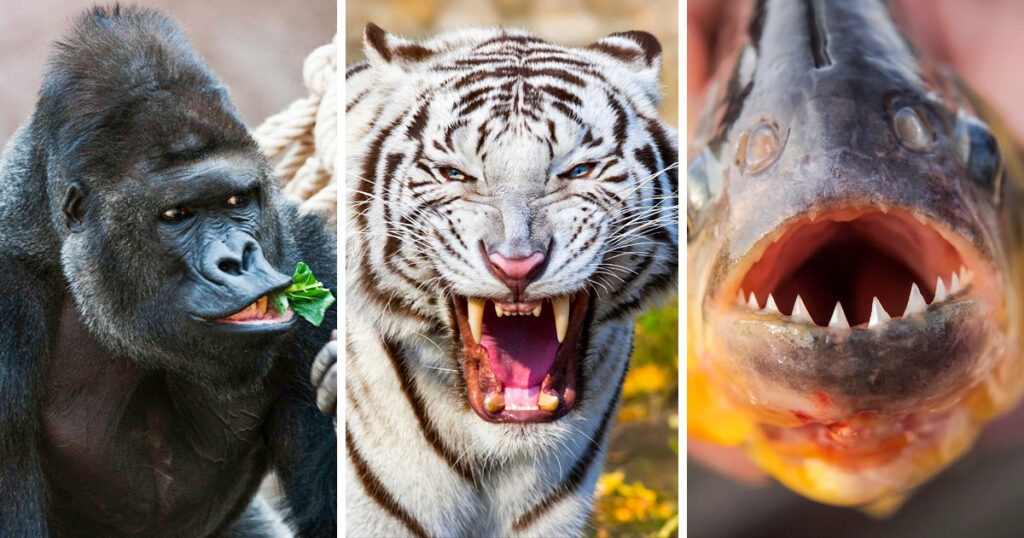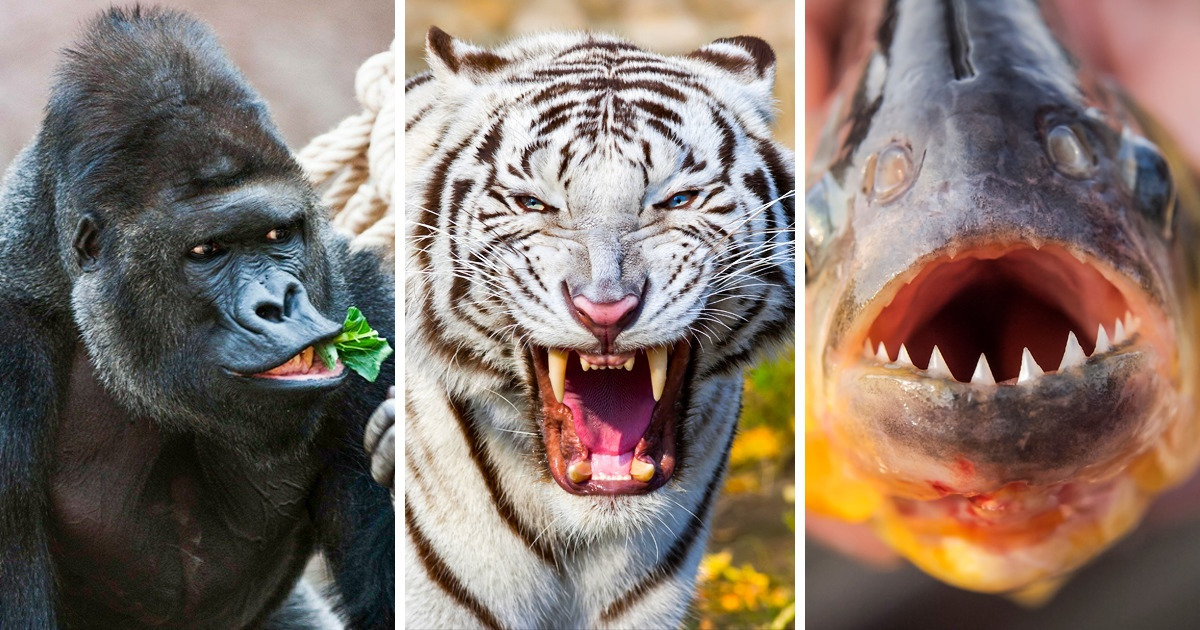
Unleashing the Jaws: Animals with the Highest Bite Force Ranked
The animal kingdom is a realm of incredible diversity and power, and one of the most fascinating measures of that power is bite force. Bite force, measured in pounds per square inch (PSI), indicates the strength of an animal’s jaw muscles and teeth. This metric is crucial for understanding an animal’s predatory capabilities, dietary habits, and overall ecological role. This article delves into the fascinating world of animals with the highest bite force, revealing which creatures possess the most formidable jaws on the planet.
Understanding Bite Force: PSI and Its Significance
Bite force isn’t just about brute strength; it’s a complex interplay of anatomy, physiology, and behavior. Animals with strong bite forces often have specialized skull structures, powerful jaw muscles, and teeth designed for crushing, tearing, or gripping. Understanding PSI helps us appreciate the adaptations that allow these animals to thrive in their respective environments.
PSI, or pounds per square inch, is the standard unit for measuring bite force. It represents the amount of force exerted on one square inch of surface area. A higher PSI indicates a more powerful bite, capable of inflicting greater damage. While PSI is a useful metric, it’s important to note that other factors, such as tooth shape and bite technique, also contribute to the effectiveness of a bite.
The Top Contenders: Animals with the Highest Bite Force
Let’s explore some of the animals with the highest bite force, ranked by their PSI:
Saltwater Crocodile (Crocodylus porosus)
Topping the list is the saltwater crocodile, boasting an astonishing bite force of around 3,700 PSI. This apex predator is found in the coastal waters of Southeast Asia, Australia, and the surrounding islands. Its massive jaws and powerful muscles allow it to crush the bones of its prey with ease. The saltwater crocodile’s bite force is not just a measure of its predatory prowess but also its ability to defend its territory and young.
Nile Crocodile (Crocodylus niloticus)
Close behind the saltwater crocodile is the Nile crocodile, with a bite force of approximately 3,400 PSI. Native to Africa, this formidable reptile is a major threat to many animals within its habitat. The Nile crocodile’s diet is incredibly varied, ranging from fish and birds to larger mammals like zebras and wildebeest. Its powerful bite and ambush tactics make it a highly successful predator. [See also: Crocodile vs Alligator: What’s the Difference?]
American Alligator (Alligator mississippiensis)
The American alligator, found in the southeastern United States, possesses a bite force of around 2,980 PSI. While not quite as powerful as its crocodile cousins, the alligator’s bite is still incredibly strong. It’s an opportunistic predator, feeding on a variety of animals, including fish, turtles, birds, and mammals. The American alligator plays a crucial role in maintaining the ecological balance of its wetland habitat.
Jaguar (Panthera onca)
Moving away from reptiles, the jaguar holds the title of the mammal with the strongest bite force, registering around 2,000 PSI. This apex predator is found in the Americas, from the southwestern United States to Argentina. The jaguar’s powerful jaws and teeth are adapted for piercing the skulls of its prey, making it a formidable hunter. Its bite force allows it to take down large animals like capybaras, tapirs, and even caimans.
Spotted Hyena (Crocuta crocuta)
The spotted hyena, native to Africa, has a bite force of approximately 1,100 PSI. This scavenger and predator is known for its powerful jaws, which allow it to crush bones and extract marrow. Spotted hyenas often hunt in packs, using their combined strength and bite force to take down large prey like wildebeest and zebras. Their ability to consume bones also helps them obtain essential nutrients.
Hippopotamus (Hippopotamus amphibius)
Despite being herbivores, hippos possess a surprisingly strong bite force of around 1,821 PSI. This power isn’t used for hunting but rather for defense and dominance displays. Male hippos often engage in fierce battles for territory and mates, using their massive jaws and teeth to inflict serious injuries. The hippo’s bite force is a testament to the power of its jaw muscles, even in the absence of predatory behavior.
Grizzly Bear (Ursus arctos horribilis)
Grizzly bears, found in North America, have a bite force of around 1,200 PSI. These powerful predators are capable of taking down large prey, such as elk and moose. Their bite force is also used for digging, breaking open logs, and defending themselves against rivals. The grizzly bear’s bite is a crucial tool for survival in its challenging environment.
Polar Bear (Ursus maritimus)
Similar to the grizzly bear, the polar bear possesses a bite force of approximately 1,200 PSI. As the largest land predator, the polar bear relies on its powerful jaws to hunt seals, its primary food source. The polar bear’s bite force allows it to break through ice and crush the skulls of its prey. [See also: Effects of Climate Change on Polar Bear Habitats.]
Tiger (Panthera tigris)
The tiger, one of the world’s most iconic predators, has a bite force of around 1,050 PSI. These powerful cats use their bite force to subdue large prey, such as deer and wild boar. The tiger’s bite is often directed at the neck or throat, causing fatal injuries. Their bite force, combined with their sharp claws and agility, makes them highly effective hunters.
Lion (Panthera leo)
Rounding out our list is the lion, with a bite force of approximately 650 PSI. While not as strong as some of the other animals on this list, the lion’s bite is still formidable. Lions typically hunt in groups, using their combined strength and bite force to take down large prey like zebras and wildebeest. The lion’s bite is often directed at the throat, suffocating the prey.
The Evolutionary Significance of High Bite Force
The evolution of high bite force in animals with the highest bite force is directly linked to their survival and reproductive success. A strong bite force allows predators to efficiently kill and consume prey, providing them with the energy and nutrients they need to thrive. It also enables them to defend themselves against rivals and protect their offspring. In herbivores, a strong bite force can be used for defense or for processing tough plant material. The evolution of powerful jaws is a testament to the forces of natural selection shaping the animal kingdom.
Factors Influencing Bite Force
Several factors influence an animal’s bite force, including:
- Jaw Muscle Size and Strength: Larger and stronger jaw muscles generate more force.
- Skull Structure: The shape and structure of the skull can influence the efficiency of force transmission.
- Tooth Morphology: Different tooth shapes are adapted for different functions, such as tearing, crushing, or gripping.
- Bite Technique: The angle and position of the bite can affect the amount of force applied.
Measuring Bite Force: Methods and Challenges
Measuring bite force in animals with the highest bite force is a challenging task. Researchers typically use specialized devices called force transducers, which are placed between the animal’s jaws. The animal is then encouraged to bite down on the transducer, and the force is measured. However, this process can be difficult and potentially dangerous, especially with large or aggressive animals. Ethical considerations also play a significant role in bite force research.
Bite Force and Human Safety
Understanding the bite force of different animals is crucial for assessing the potential risks they pose to humans. While most animals are not inherently aggressive towards humans, they may bite in self-defense or if they feel threatened. It’s important to be aware of the potential danger posed by animals with the highest bite force and to take appropriate precautions when interacting with them. Never approach or attempt to handle wild animals, and always follow safety guidelines when visiting zoos or wildlife parks.
Conclusion: The Power and Diversity of Animal Jaws
The world of animals with the highest bite force is a testament to the incredible power and diversity of the animal kingdom. From the bone-crushing jaws of crocodiles to the skull-piercing bite of jaguars, these creatures possess remarkable adaptations that allow them to thrive in their respective environments. Understanding bite force provides valuable insights into the ecology, behavior, and evolution of these fascinating animals. As we continue to study and appreciate the natural world, we gain a greater understanding of the forces that shape life on Earth. The incredible bite force exhibited by these animals highlights the raw power and evolutionary adaptations that drive survival in the wild. By recognizing and respecting these forces, we can ensure a safer and more harmonious coexistence with these impressive creatures. Remember that respecting wildlife and maintaining a safe distance is crucial, especially when dealing with animals with the highest bite force. Their power is a reminder of the wild’s untamed nature and the importance of conservation efforts. Learning about the animals with the highest bite force also underscores the delicate balance of ecosystems and the role each species plays within them. Protecting these animals and their habitats is essential for maintaining biodiversity and ensuring the health of our planet. The power of their bite is a symbol of their strength, resilience, and the vital part they play in the world’s intricate web of life.

